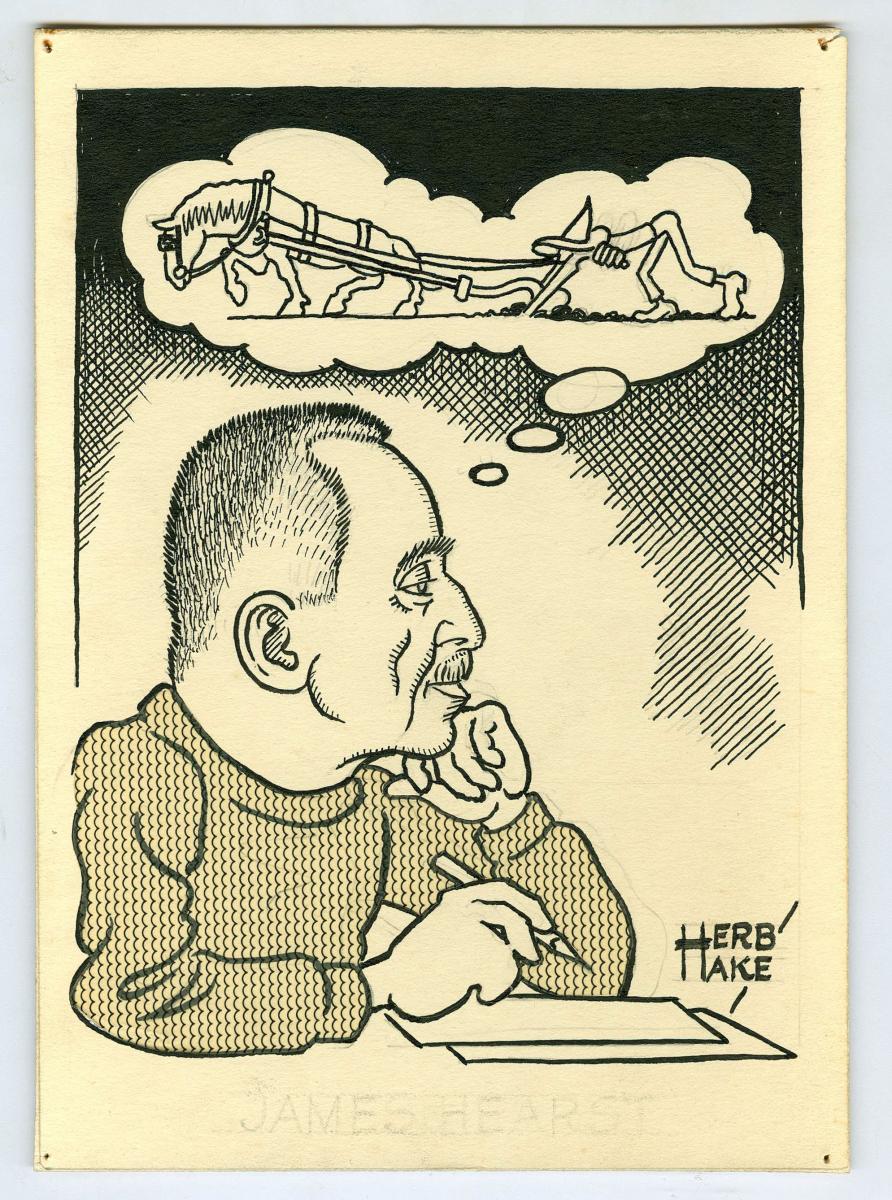Agricultural Journalism
Agricultural Journalism: James Hearst's Advocacy for Farmers
James Hearst was a passionate advocate for farmers and promoted the work they did. In his farm related journalism and essays, he sought to illustrate what agriculture did for this country and to recognize the individuals who made it a way of life.
A frequent contributor to Wallaces' Farmer, Hearst penned an article, “When You Subtract the Dollars, What’s Left?” in 1929. In it, he chastised those who tried to simplify farming “as a way of life,” noting that those people have only seen “a mirror of it shining on the back of their heads.” Hearst argued that farming was a lot of hard work coupled with large financial investments and difficult sacrifices particularly when compared to how other people made a living in the United States. He noted that farming has “a fascination about it, an attraction that is out of the ordinary,” especially since there are those who would stay in farming even if there was no money in it. One reason for this, he believed, was the “pleasure of creation” that farmers received in viewing the results of their work.
 He continued this support of farmers in other publications like The Nation. In the article, “A Farmer Pays His Debts,” Hearst provided a cost breakdown of a typical farm to illustrate that farmers were not getting rich. The Department of Agriculture had reported for 1945 that farm income was over $21 billion. Economists also noted that over a twenty-year period, farmers paid down their debt by over $5 billion. But as Hearst wrote, farmers were conservative and many an older farmer remembered the days of the Great Depression, and “anyone who has been in business knows that it is possible to have a whale of a gross income and still end the fiscal year with a net loss.”
He continued this support of farmers in other publications like The Nation. In the article, “A Farmer Pays His Debts,” Hearst provided a cost breakdown of a typical farm to illustrate that farmers were not getting rich. The Department of Agriculture had reported for 1945 that farm income was over $21 billion. Economists also noted that over a twenty-year period, farmers paid down their debt by over $5 billion. But as Hearst wrote, farmers were conservative and many an older farmer remembered the days of the Great Depression, and “anyone who has been in business knows that it is possible to have a whale of a gross income and still end the fiscal year with a net loss.”
As a writer and farmer, Hearst had witnessed many changes within the industry. One of his fiercest defenses of the farmer can be found in The Commonweal entitled “The Case for the Farmer.” He had written how agriculture was a declining industry in spite of “boom prices” within the United States economy. According to Hearst, the American farmer was facing three different forces — selling at wholesale but buying at retail, unpublicized increase on interest rates for FHA “disaster” loans and the forces of nature. Through the avenues available to him, Hearst fought for the farmer using the best tool he had at his disposal — his words.
— Sue Sasek
James Hearst: Agricultural Journalism Articles
"Be Sure of Prices a Year Ahead." Wallaces' Farmer, 6 April 1946, p. 357.
"Case for the Farmer." Commonweal, 18 Nov. 1955, pp. 159-161.
"The Demand of Iowa Farmers." McNaught’s Monthly, March 1926, pp. 70-71.
"The Farm View of Price Supports." The Nation, 6 Nov. 1948, p. 531.
"The Farmer Pays His Debts." The Nation, 12 April 1947, pp. 420-422.
"The Farmer’s Job." The Nation, 27 April 1946, p. 508.
"Farmer’s New Economy." The Nation, 10 April 1948, pp. 395-396.
The Horn of Plenty." The Nation, 21 Sept. 1946, pp. 318-320.
"Over the Air from Houston." Wallaces' Farmer, 6 July 1928, p. 984.
"Radio and the Farm Boy." Wallaces' Farmer, 10 Nov. 1923, p. 17.
"When You Subtract the Dollars, What’s Left?" Wallaces' Farmer, 31 May 1929, p. 3.
